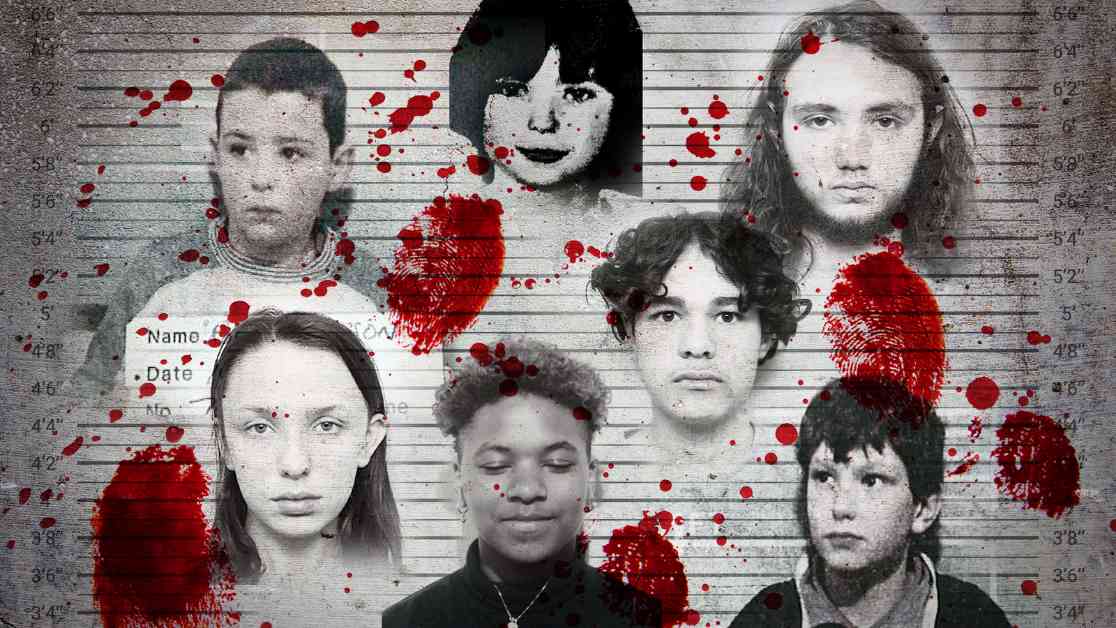Are Juvenile Offenders Getting Younger in Violent Crimes?
In recent years, there has been a disturbing trend of young offenders committing violent crimes, leaving communities shocked and questioning the root causes of such heinous acts. The cases of Shawn Seesahai, Alfie Lewis, and Brianna Ghey are just a few examples of teenagers being involved in fatal incidents that have garnered national attention. These tragic events raise the question: are juvenile offenders getting younger in violent crimes?
The Rise of Youth Violence
Dr. Simon Harding, a criminology expert, believes there has been an increase in serious violence among young people, with a greater acceptance of extreme levels of violence between children. He notes that what may have been resolved with a simple altercation in the past now escalates into fatal consequences, such as stabbings to vital organs like the heart or neck. This shift towards more extreme acts of violence among youth is concerning and requires a closer examination of the underlying issues.
The Impact of Social Media and Peer Influence
One factor contributing to the rise of youth violence is the influence of social media and peer pressure. With the proliferation of social platforms, young individuals are exposed to harmful content and negative influences that can desensitize them to violence. The pressure to conform to certain behaviors, including carrying weapons or engaging in criminal activities, can lead vulnerable teenagers down a dangerous path.
The Role of Mental Health and Trauma
While not all young offenders have underlying mental health issues, it is essential to consider the impact of trauma and adverse experiences on their behavior. Research has shown that many individuals involved in violent crimes have experienced significant trauma or abuse in their lives, leading to maladaptive coping mechanisms and a distorted view of violence. Addressing the mental health needs of young offenders is crucial in preventing future acts of violence.
Subheadings:
The Impact of Social Media and Peer Influence
The Role of Mental Health and Trauma
Community Response and Prevention Efforts
Community Response and Prevention Efforts
In response to the rise in youth violence, communities and organizations have implemented various prevention efforts to address the root causes of violent behavior among young individuals. School programs, mental health services, and community outreach initiatives aim to provide support and resources to at-risk youth, helping them navigate challenges and make positive choices. By fostering a sense of belonging and empowerment, these prevention efforts seek to steer young individuals away from violence and towards a brighter future.
The Importance of Early Intervention
Early intervention is key in addressing youth violence and preventing future tragedies. By identifying at-risk youth and providing them with the necessary support and resources, communities can intervene before violent behaviors escalate. Mental health screenings, counseling services, and mentorship programs can help young individuals address underlying issues and develop healthy coping mechanisms. Investing in early intervention programs is essential in breaking the cycle of violence and creating safer communities for all.
The Need for Comprehensive Solutions
Addressing the issue of youth violence requires a multi-faceted approach that encompasses prevention, intervention, and rehabilitation efforts. By engaging with young individuals, families, schools, and community organizations, we can create a supportive environment that promotes positive behavior and deters violence. Through collaboration and a commitment to change, we can work towards a future where youth violence is no longer a prevalent issue in our society.
In conclusion, the cases of juvenile offenders committing violent crimes are a sobering reminder of the challenges faced by young individuals in today’s society. By addressing the root causes of youth violence, investing in prevention efforts, and promoting early intervention, we can create a safer and more supportive environment for all young individuals. It is crucial that we work together as a community to tackle this issue and ensure that our youth have the opportunities and resources they need to thrive.













